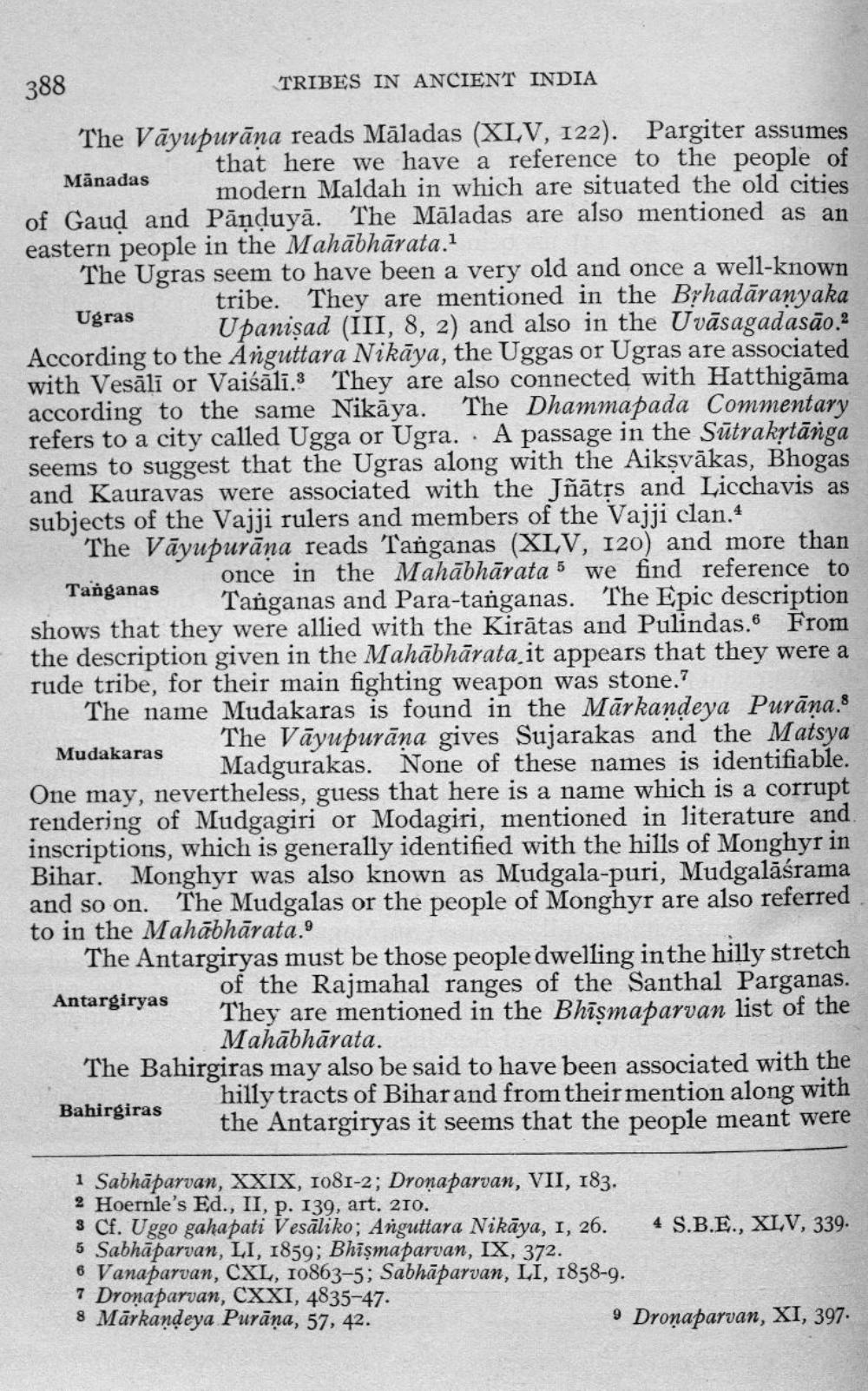________________
388
TRIBES IN ANCIENT INDIA
The Vāyupurāna reads Māladas (XLV, 122). Pargiter assumes
that here we have a reference to the people of Mānadas
modern Maldah in which are situated the old cities of Gaud and Pāņduyā. The Māladas are also mentioned as an eastern people in the Mahābhārata.1 The Ugras seem to have been a very old and once a well-known
tribe. They are mentioned in the Byhadāranyaka Ugras Ubanisad (III, 8, 2) and also in the Uvāsagadasão.2 According to the Anguttara Nikāya, the Uggas or Ugras are associated with Vesālī or Vaiśālī.3 They are also connected with Hatthigāma according to the same Nikāya. The Dhammapada Commentary refers to a city called Ugga or Ugra. · A passage in the Sūtrakytānga seems to suggest that the Ugras along with the Aiksvākas, Bhogas and Kauravas were associated with the jñātrs and Licchavis as subjects of the Vajji rulers and members of the Vajji clan.4 The Vāyupurāna reads Tanganas (XLV, 120) and more than
once in the Mahābhārata 5 we find reference to Tanganas Tanganas and Para-tanganas. The Epic description shows that they were allied with the Kirātas and Pulindas. From the description given in the Mahābhārata it appears that they were a rude tribe, for their main fighting weapon was stone.? The name Mudakaras is found in the Mārkandeya Purāna.8
- The Vāyupurāna gives Sujarakas and the Matsya Mudakaras
de Madgurakas. None of these names is identifiable. One may, nevertheless, guess that here is a name which is a corrupt rendering of Mudgagiri or Modagiri, mentioned in literature and inscriptions, which is generally identified with the hills of Monghyr in Bihar. Monghyr was also known as Mudgala-puri, Mudgalāśrama and so on. The Mudgalas or the people of Monghyr are also referred to in the Mahābhārata.
The Antargiryas must be those people dwelling in the hilly stretch Antargiryas
e of the Rajmahal ranges of the Santhal Parganas.
They are mentioned in the Bhīşmaparvan list of the
Mahābhārata. The Bahirgiras may also be said to have been associated with the
hilly tracts of Bihar and from their mention along with Bahirgiras
the Antargiryas it seems that the people meant were
1 Sabhāparvan, XXIX, 1081-2; Dronaparvan, VII, 183. 2 Hoernle's Ed., II, p. 139, art. 210. 8 C. Uggo gahapati Vesaliko; Anguttara Nikāya, I, 26. 4 S.H.E., XIV, 339. 5 Sabhāparvan, LI, 1859; Bhīşmaparvan, IX, 372. 6 Vanaparvan, CXL, 10863-5; Sabhāparvan, LI, 1858-9. 7 Drona parvan, CXXI, 4835-47. 8 Mārkandeya Purāņa, 57, 42.
• Dronaparvan, XI, 397.




